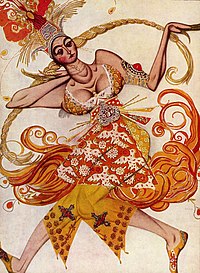
CRISPR-Based Targeted Epigenetic Editing Enables Gene Expression Modulation of the Silenced Beta-Galactoside Alpha-2,6-Sialyltransferase 1 in CHO Cells.
Sign Up to like & getrecommendations! Published in 2018 at "Biotechnology journal"
DOI: 10.1002/biot.201700217
Abstract: Despite great efforts to control and modify gene expression of Chinese Hamster Ovary (CHO) cells by conventional genetic engineering approaches, i.e. overexpression or knockdown/-out, subclonal variation, induced unknown regulatory effects as well as overexpression stress… read more here.
Keywords: gene; epigenetic editing; cho cells; gene expression ... See more keywords

Proline-Rich Chaperones Are Compared Computationally and Experimentally for Their Abilities to Facilitate Recombinant Butyrylcholinesterase Tetramerization in CHO Cells.
Sign Up to like & getrecommendations! Published in 2018 at "Biotechnology journal"
DOI: 10.1002/biot.201700479
Abstract: Human butyrylcholinesterase (BChE), predominantly tetramers with a residence time of days, offers the potential to scavenge organophosphorus pesticides and chemical warfare agents. Efficient assembly of human BChE into tetramers requires an association with proline-rich peptide… read more here.
Keywords: rich chaperones; cho cells; rbche; proline rich ... See more keywords

Temperature Down‐Shift Modifies Expression of UPR‐/ERAD‐Related Genes and Enhances Production of a Chimeric Fusion Protein in CHO Cells
Sign Up to like & getrecommendations! Published in 2020 at "Biotechnology Journal"
DOI: 10.1002/biot.202000081
Abstract: Low culture temperature enhances the cell‐specific productivity of Chinese hamster ovary (CHO) cells expressing varied recombinant (r‐) proteins, but the mechanisms remain unclear. Regulation of unfolded protein response (UPR) pathway genes, such as transcriptional regulatory… read more here.
Keywords: protein; chimeric fusion; culture temperature; production ... See more keywords

Identification and CRISPR/Cas9 Knockout of the Endogenous C1s Protease in CHO Cells Eliminates Aberrant Proteolysis of Recombinantly Expressed Proteins.
Sign Up to like & getrecommendations! Published in 2019 at "Biotechnology and bioengineering"
DOI: 10.1002/bit.27016
Abstract: Proteolysis associated with recombinant protein expression in Chinese Hamster Ovary (CHO) cells has hindered the development of biologics including HIV vaccines. When expressed in CHO cells, the recombinant HIV envelope protein, gp120, undergoes proteolytic clipping… read more here.
Keywords: proteolysis; protease; cho cells; c1s protease ... See more keywords

Epigenomic features revealed by ATAC‐seq impact transgene expression in CHO cells
Sign Up to like & getrecommendations! Published in 2021 at "Biotechnology and Bioengineering"
DOI: 10.1002/bit.27701
Abstract: Different regions of a mammalian genome have different accessibilities to transcriptional machinery. The integration site of a transgene affects how actively it is transcribed. Highly accessible genomic regions called super‐enhancers have been recently described as… read more here.
Keywords: integration; atac seq; cho cells; super enhancer ... See more keywords

Modeling apoptosis resistance in CHO cells with CRISPR‐mediated knockouts of Bak1, Bax, and Bok
Sign Up to like & getrecommendations! Published in 2022 at "Biotechnology and Bioengineering"
DOI: 10.1002/bit.28062
Abstract: Chinese hamster ovary (CHO) cells are the primary platform for the production of biopharmaceuticals. To increase yields, many CHO cell lines have been genetically engineered to resist cell death. However, the kinetics that governs cell… read more here.
Keywords: bax bok; cell; bak1 bax; cho cells ... See more keywords

Production of afucosylated antibodies in CHO cells by coexpression of an anti‐FUT8 intrabody
Sign Up to like & getrecommendations! Published in 2022 at "Biotechnology and Bioengineering"
DOI: 10.1002/bit.28127
Abstract: Some effector functions prompted by immunoglobulin G (IgG) antibodies, such as antibody‐dependent cell‐mediated cytotoxicity (ADCC), strongly depend on the N‐glycans linked to asparagine 297 of the Fc region of the protein. A single α‐(1,6)‐fucosyltransferase (FUT8)… read more here.
Keywords: fut8 intrabody; production; anti fut8; intrabody ... See more keywords

High‐level production of wild‐type and oxidation‐resistant recombinant alpha‐1‐antitrypsin in glycoengineered CHO cells
Sign Up to like & getrecommendations! Published in 2022 at "Biotechnology and Bioengineering"
DOI: 10.1002/bit.28129
Abstract: Alpha‐1‐antitrypsin (A1AT) is a serine protease inhibitor which blocks the activity of serum proteases including neutrophil elastase to protect the lungs. Its deficiency is known to increase the risk of pulmonary emphysema as well as… read more here.
Keywords: oxidation; alpha antitrypsin; a1at; cho cells ... See more keywords

Artificial induction of chromosome aneuploidy in CHO cells alters their function as host cells
Sign Up to like & getrecommendations! Published in 2022 at "Biotechnology and Bioengineering"
DOI: 10.1002/bit.28289
Abstract: Chinese hamster ovary (CHO) cells are major host cells for biopharmaceuticals. During culture, the chromosome number of CHO cells alters spontaneously. Here, we investigated the effects of artificial changes in the chromosome number on productivity.… read more here.
Keywords: host; chromosome; cho cells; chromosome number ... See more keywords

miR‐143 targets MAPK7 in CHO cells and induces a hyperproductive phenotype to enhance production of difficult‐to‐express proteins
Sign Up to like & getrecommendations! Published in 2017 at "Biotechnology Progress"
DOI: 10.1002/btpr.2475
Abstract: In recent years, the number of complex but clinically effective biologicals such as multi‐specific antibody formats and fusion proteins has increased dramatically. However, compared to classical monoclonal antibodies (mAbs), these rather artificially designed therapeutic proteins… read more here.
Keywords: mir 143; production; production difficult; cho cells ... See more keywords

Inhibition of endogenous miR‐23a/miR‐377 in CHO cells enhances difficult‐to‐express recombinant lysosomal sulfatase activity
Sign Up to like & getrecommendations! Published in 2020 at "Biotechnology Progress"
DOI: 10.1002/btpr.2974
Abstract: Difficult‐to‐express (DTE) recombinant proteins such as multi‐specific proteins, DTE monoclonal antibodies, and lysosomal enzymes have seen difficulties in manufacturability using Chinese hamster ovary (CHO) cells or other mammalian cells as production platforms. CHO cells are… read more here.
Keywords: mir 23a; sulfatase; cho cells; mir ... See more keywords